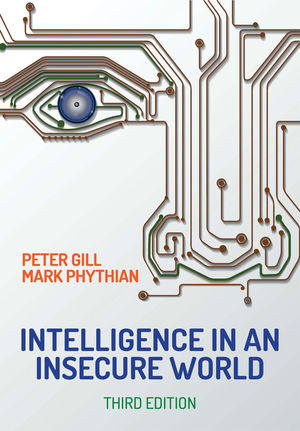Tech-savvy central stations are tapping new technology to enhance operations, generating benefits for themselves and for their customers. Operational enhancements include improved operator training, connecting in an automated fashion to 911 service public safety answering points (PSAPs), enhancing redundancy and improving how customers are notified of alarms and other events.
Technology advances also have enabled central stations to offer a range of exciting new services.
New Training Practices
Central station operator training at Warrendale, Pa.-based dealer Vector Security (Featured on the cover), is “much different than in the past,” notes Anita Ostrowski, vice president of central station services for the company. Vector was recently named SDM’s 2015 Dealer of the Year. Vector has found that training is more effective when received in “short spurts,” Ostrowski says. Vector’s policy now is to train operators on a specific topic, then give the operators time to put that information into practice before providing training on another topic.
Vector also offers career advancement training to prepare operators for positions such as supervisors and mentors, Vector offers in-house classes on topics such as how to mentor or how to reset and program equipment.
Meanwhile, Nashville-based dealer ADS Security has had good results from cross-training central station operators and customer service personnel, notes Scott Lickteig, ADS director of monitoring.
“We want to get to where when a customer calls, 90 percent of [issues can be] resolved on the first call,” Lickteig explains. He points to the example of a central station operator talking to a customer about an issue with the customer’s system. “The customer feedback has been very good,” he adds.
Increasingly central stations also are using new technology options to enhance operator training. Romeoville, Ill.-based dealer Protection 1, for example, uses an online learning management system created by the Central Station Alarm Association (CSAA) to train personnel, notes Donald Young, Protection 1 chief information and operating officer.
ASAP-to-PSAP Progress
Another important trend in the central station market is increased support for the automated secure alarm protocol (ASAP), which allows central stations to connect in a highly automated fashion with PSAPs, thereby improving response times for emergency first responders.
Several of the major national alarm companies decided to have their central stations support ASAP-to-PSAP connectivity, notes Vector President and CEO Pam Petrow.
“That really increased momentum,” comments Petrow. “Now when we walk into a 911 center and ask ‘can you help?’ we have the clout of the major national players.”
Petrow chaired the committee that started ASAP. “It’s my baby,” she says. “I want to make sure it nurtures and grows and becomes a great contribution to society.” She has even directed her employees to help competing dealers with implementation in order to speed adoption.
The central station at Warrendale, Pa.-based Guardian Protection Services has deployed the ASAP process in all participating municipalities and is reaping the benefits, notes Mike Overby, vice president of customer services for Guardian Protection.
“The automated nature of the ASAP process helps to create greater efficiencies in law enforcement dispatch operations as well as central stations and is a win-win scenario,” Overby adds.
The process of “cleaning up” account data so that it can interface properly with the local PSAP is a substantial undertaking for a central station, but Protection 1 found it was well worth the effort, Young says. Data has shown that the investment has a three-month payback period, he says.
Protection1 has taken redundancy a step further than traditional methods, however, by operating five totally redundant call centers and by duplicating receiver capacity, with less than 50 percent of capacity in use at any time, Young says.
Notification Me
Advances in technology also have opened up new options for notifying customers and the people on customer call lists when an alarm occurs, often replacing or minimizing the need for operators to place calls.
“We’ve learned that people on call lists to notify in the event of an alarm don’t really like to answer the phone; they prefer the call to go to voice mail,” Young comments. “When you send a text, it’s amazing what kind of attention you get.”
Accordingly, Protection 1 is changing its notification process to be more text-based. Using “chat room” technology, Protection 1 invites those notified of alarms to an online chat room to decide the appropriate response.
This option is particularly helpful for national accounts that may have as many as 20 people on their call lists, Young notes. “I can text all 20 at the same time,” he observes. “They chat with each other about what to do.”
People from Protection 1 are not involved in the chat room until the customer invites them, Young adds.
At press time, Protection 1 was about to roll out a new capability for its notification processes. When a video clip of an alarm event is available, the company also will have the ability to text it to the entire call list.
Machine-Machine Opportunities
Technology advances also have paved the way for central stations to add new types of services.
As a provider of central station automation software, Tampa, Fla.-based SureView Systems has a broad view of the kinds of services that security dealers are offering. One that has emerged recently is monitoring for air handlers. “We can accept [the signals] and make them into an event that an operator would handle,” explains Chris Brown, director of central stations for SureView.
The wide availability of cellular data services allows more devices to be monitored. For example, central station automation software from Kissimmee, Fla.-based MKS has been used to monitor the feed mix as a service for dairy farmers. “This is accomplished using a direct wireless connection between a central station using our monitoring software and the on-board computers built into a livestock feeding machine,” explains Victoria Ferro, MKS president.
The system reports data to farmers and notifies them of problems, Ferro says. “Benefits include eliminating the need for intervention by farmers unless there is a problem, and improved consistency and quality of the feed mix,” she comments.
Applications such as these fall into a category that Ferro calls “machine-to-machine” communications, also known as M2M — and she sees central stations becoming increasingly involved in such applications, which often may not need much, if any, operator intervention. M2M involves monitoring information from other machines — gathering and parsing the information, and automatically sending text or email alerts, she explains.
Some applications may involve storing information from the system and generating alerts if an event falls outside pre-specified parameters. For example, a supervisor might be alerted if an employee opens a retail location earlier than usual, Ferro notes.
M2M communications is sometimes referred to as “The Internet of Things” and Chuck Speck, president of central station automation software provider Bold Technologies of Colorado Springs, Co., also notes opportunities for central stations in that area. “As you get a greater variety of standardized products that offer information, the ability to compile this with other sources [to] provide better overall situational awareness has value,” he says. “[Monitoring centers] should be and can be at the center of that value proposition just by having the capability to readily accept these technologies as they become part of a monitored network,” he says.
Command and Control
Another new service that some central stations are beginning to offer is to act as a command and control center for schools or other organizations that have large campuses to protect. SureView, for example, now supports this capability in its central station automation software.
“We offered the opportunity to our larger central station customers to run what would be a command center-as-a-service,” Brown explains. The idea is to provide an alternative to in-house command and control centers for large corporate customers by supporting the same capabilities from the central station.
Central stations offering command center-as-a-service also will handle tasks such as incident management, Brown notes. He cites the hypothetical example of a central station investigating a slip-and-fall report made by a customer in a store.
Compared with traditional methods, the underlying software offers a much more in-depth platform to handle the event — and post-event, to gather information, Brown explains. The software provides much of the functionality of a PSIM system, he says. “It’s a lighter, faster and less expensive solution but [provides] pretty much all of the functionality.”
Central station operators supporting such offerings have substantially more responsibility than they do for a traditional security system and “may be involved up to two hours, much like a guard would be on site,” Brown explains.
Considering the approaches and innovations, exciting times are ahead for companies in the central station business.












